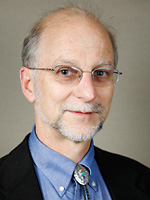David R. Schwind
Senior Vice President
Charles M. Salter Associates Inc.
BSIDE ’74
In recognition of his creative endeavors and professional contributions to the field of acoustical engineering and design
Although David Schwind was born in Indiana, he spent his teenage years in “Swinging London,” the cultural scene that thrived in London in the 1960s.
“Growing up, I was really into music,” says Schwind. “I listened to pirate radio, I listened to French radio. There was a huge music scene in London, and you could see all kinds of great artists for just a couple of dollars.”
After completing his first year at Purdue, Schwind realized that none of the traditional engineering disciplines appealed to him. Inspired by his love of music, he opted for interdisciplinary engineering and created a new specialization, acoustical engineering. The specialization now boasts 30 students – more than any other interdisciplinary engineering area at Purdue.
Schwind’s plan of study focused on four main areas: art and design, mechanical engineering, physics and electrical engineering. He took courses in noise control, architectural acoustics, wave mechanics, the physics of music and even sculpture. The wide variety allowed him to pursue engineering while still feeding his creativity.
Upon receiving his bachelor’s degree in 1974, Schwind began a steady ascent in his field. Highlights include a project at Bechtel Corp., where he implemented a solution for a noise problem that was “annoying a whole town.” In 1984, he joined San Francisco consulting firm Charles M. Salter Associates, and in 1992, he made partner. Schwind specializes in acoustical design for a wide variety of facilities, including theaters, performing arts venues, mixed-use projects, civic buildings, and music and film studios. For instance, he consulted on the Frank Gehry-designed Walt Disney Concert Hall in Los Angeles. He was named fellow of the Audio Engineering Society in 1995.
According to Schwind, one of the most important things in acoustical design is avoiding defects. Two main defects of room acoustics are background noise created by a building’s systems, such as ventilation systems, and sound isolation from surrounding spaces, including the outdoors. “It would make no sense to have a beautiful concert hall if you can hear every plane fly over,” says Schwind. “We like to think of what we do as helping people – making things sound beautiful and making unpleasant sounds less noticeable.”
At Charles M. Salter Associates, about half of Schwind’s jobs come from the film industry. He and his colleagues designed a screening room in the late 1980s for Dolby Labs that is still considered the industry standard. The group also remodeled the sound department and designed a new studio theater for Warner Bros. “I want to emphasize that I never work solo,” Schwind says. “We have a great team, and I never would have accomplished as much as I have without my colleagues.”
Altogether, Schwind is highly satisfied that he pursued acoustical engineering. And he never forgets that it’s music that got him there.
“Music is the international language. Almost everyone can understand it,” he says. “It’s good to be in a field that brings beauty and meaning to so many people.”
Career Highlights
| 1994-present | Senior Vice President, Charles M. Salter Associates Inc. |
|---|---|
| 1986-1994 | Principal, Charles M. Salter Associates Inc. |
| 1984-1986 | Senior Consultant, Charles M. Salter Associates Inc. |
| 1983-1984 | Acoustical Consultant, Paoletti/Lewitz Associates Inc. |
| 1981-1982 | Independent Acoustical Consultant |
| 1976-1981 | Senior Noise Control Engineer, Research and Engineering, Bechtel Corp. |
| 1975-1976 | Acoustical Consultant, Acoustical Consultants Inc. |
| 1974 | BSIDE (Acoustical Engineering), Purdue University |

